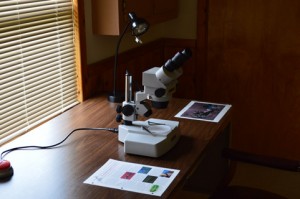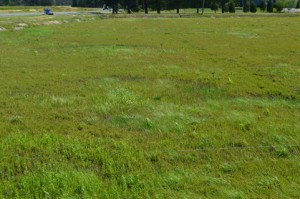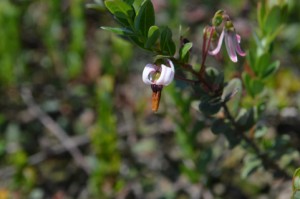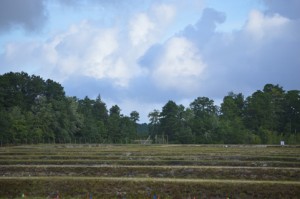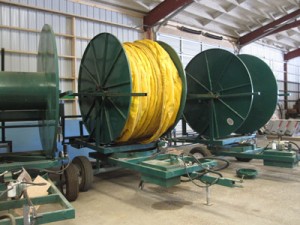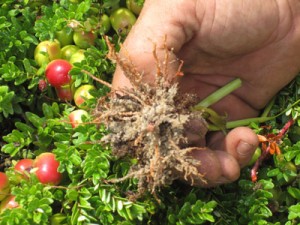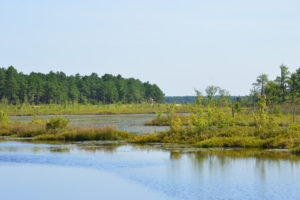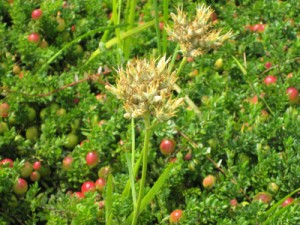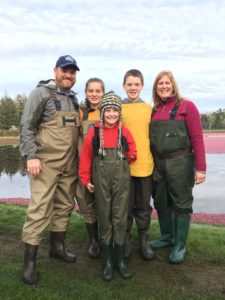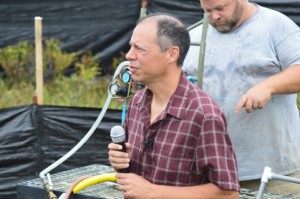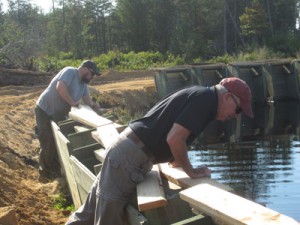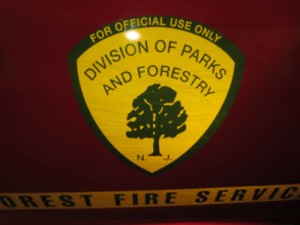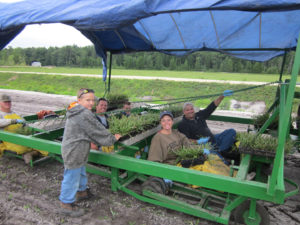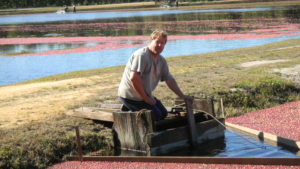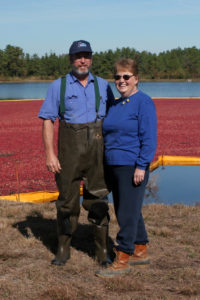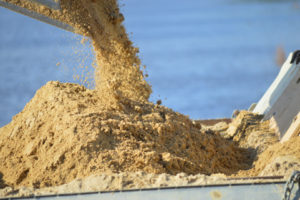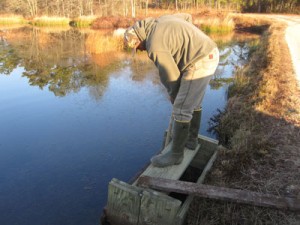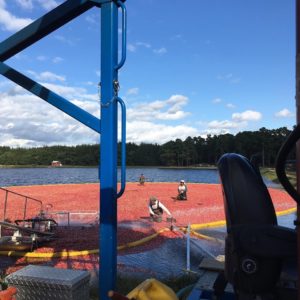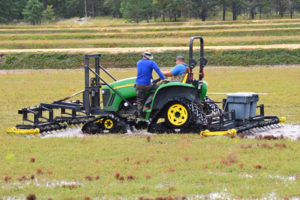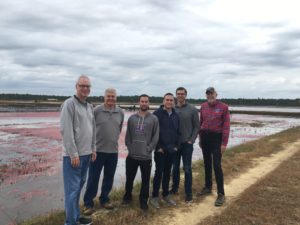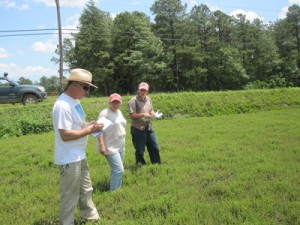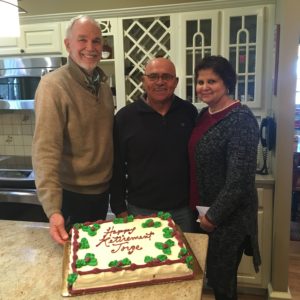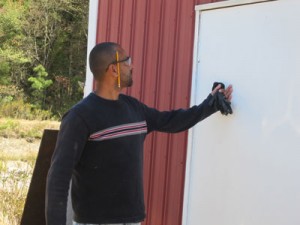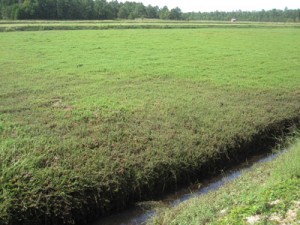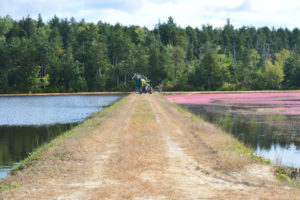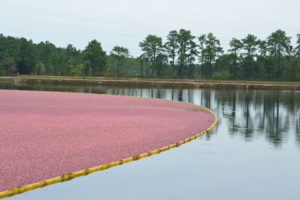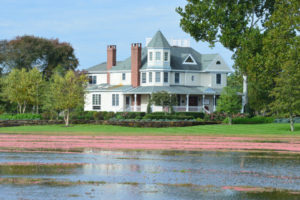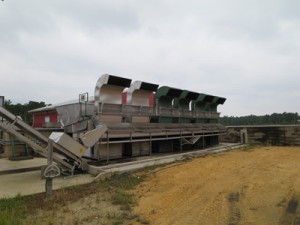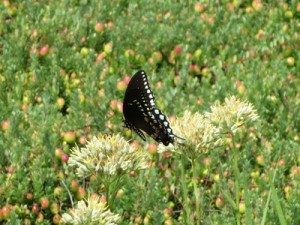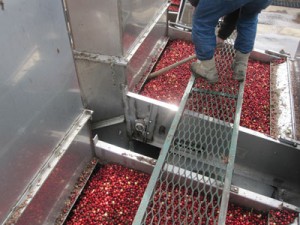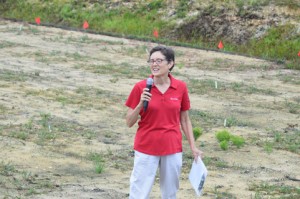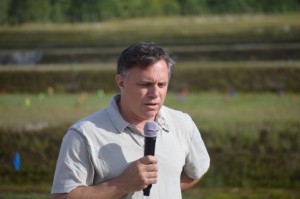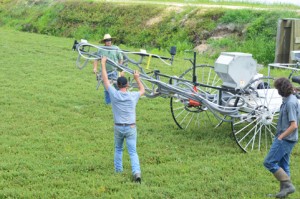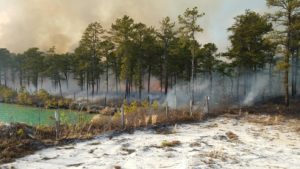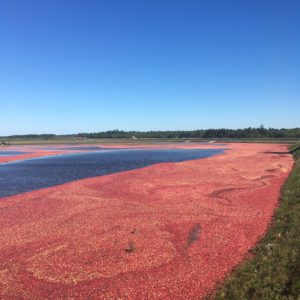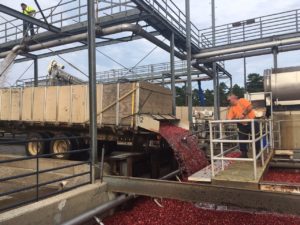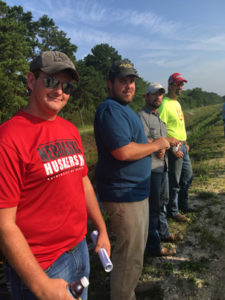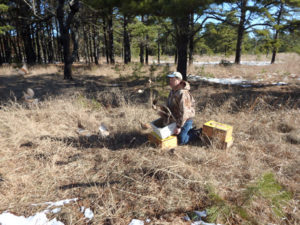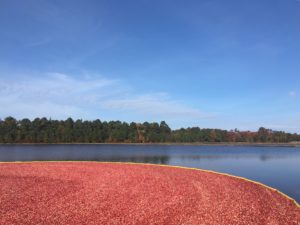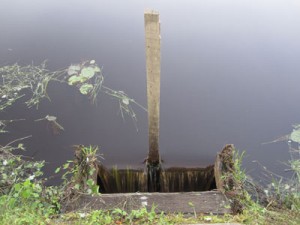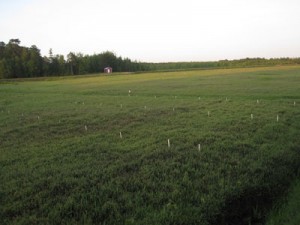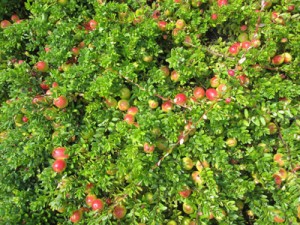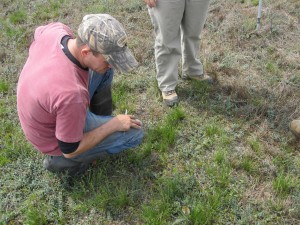This week it was once again time for the annual Cranberry Growers Twilight Meeting, this year hosted by the Rutgers University Philip E. Marucci Center for Blueberry & Cranberry Research. In contrast to the American Cranberry Grower Association’s annual winter meeting, the focus here is less research-oriented and uses a more hands-on approach to addressing timely topics of importance to cranberry growers. Included on the agenda were such topics as troubleshooting cranberry disease problems and working with new cranberry varieties.
In addition to the importance of new research findings, it’s also a great chance for the cranberry community to get together face-to-face. Our team, and the other growers, work with Rutgers all the time, but it’s good to be able to sit down with other growers and find out if they’re having some of the same problems with pests, or fairy ring, or excessive heat. That additional perspective can help us troubleshoot our own applications.
The big focus in this year’s presentations: false blossom. False blossom is “a virus-like phytoplasma that can be systemic in cranberry plants”, passed along by a pest known as the blunt-nosed leaf hopper. “False blossom is characterized by a malformation of the flowers,” says the Marucci Center, “…and there is no production of fruit, with devastating effects for cranberry yield.”
Production manager Mike Haines found the false blossom talks especially useful. “I’m concerned about the levels I’ve been seeing,” he says. “The experiment that Lindsay is running is at our place, so it was helpful to hear about her progress.”
He found everyone’s presentations informative. “Peter’s talk was interesting too, and was something we talked about over the winter. It’s good to know specifically which different fungal pathogens are out there, which ones are improving and which ones are worse, so we can map out the best strategy. Thierry’s chat was good as well; we’ve been following his recommendations with some good success. Overall it was a great meeting; they were all pertinent and informative talks with immediate practical impact for us.”
And as always, the chance to connect with fellow growers was invaluable. “It was the first cranberry meeting we’d had in person for over a year!” Mike says. “It really was great to catch up with everybody.”
“Just about everyone in the New Jersey cranberry industry was there,” says Bill Haines. “I was particularly pleased to see Rutgers recognize Nick Vorsa in appreciation for all his years of work in advancing the Marucci Center. Nick’s done remarkable work with the breeding program and all of the new varieties and it was wonderful to see him get the recognition.”

